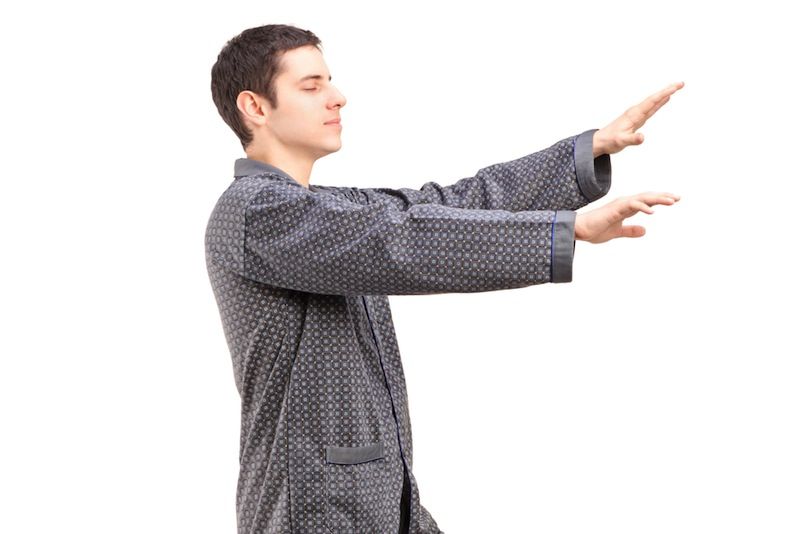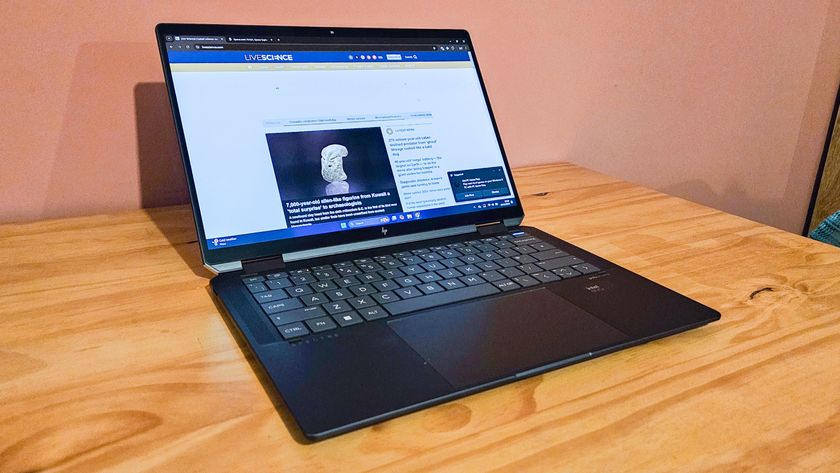
Should You Wake Up a Sleepwalker?

Bizarre tales of people cooking, wandering outdoors, and even driving around while fast asleep are part of a phenomenon known as somnambulism, or sleepwalking. While your natural inclination might be to wake up someone who is fumbling around in a daze, it's commonly thought that this could be dangerous.
According to Dr. Mark Mahowald, a sleep specialist at Stanford University, the story originates from an ancient belief that a person’s soul leaves the body during sleep. Legend had it that waking a sleepwalker would doom that person to wander soullessly forever.
Now, however, scientists have a much better understanding of what's going on in a sleepwalker's brain. And while it wouldn't necessarily hurt to try to wake a sleepwalker, Mahowald said it's notoriously difficult to rouse them in this state. [Top 11 Spooky Sleep Disorders]
"Best thing you can do is turn them around and send them back to bed," Mahowald told Live Science.
While still somewhat stigmatized, sleepwalking is incredibly common. In fact, between 1 percent and 15 percent of the United States population sleepwalks, and almost all children have had sleepwalking episodes, according to The National Sleep Foundation.
"Sleepwalking is part of the human condition," Mahowald told Live Science. "It is absolutely not associated with psychiatric disorders."
"The most important concept in understanding sleepwalking and sleep terrors is that wake and sleep states are not mutually exclusive, and sleep is not necessarily a whole-brain phenomenon," Mahowald said.
Sign up for the Live Science daily newsletter now
Get the world’s most fascinating discoveries delivered straight to your inbox.
In other words, when someone is sleepwalking, the parts of the brain that are capable of generating complex behaviors are awake but the parts of the brain that store memories and contribute to conscious decision-making are asleep.
People who sleepwalk tend to have no memory of the episode, Mahowald explained. This is because the behaviors take place without conscious awareness — they originate from the brain's central pattern generator, where the neural pathways for learned and heavily practiced movements are stored. For this reason, you won't find a sleepwalker playing the piano if that person has no prior musical training or speaking a language they don't already know, he said.
The most common behavior among sleepwalkers? Urination.
"Men will wake up and pee in a shoe," Mahowald said. Oftentimes, people are awake enough to know they have a full bladder, but not awake enough to find the toilet, he added.
But whether sleepwalking is dangerous is a complicated question, Mahowald said. Even if the actions aren't uncharacteristic, accidents certainly happen.
These unconscious behaviors also have interesting legal implications. The "sleepwalking defense" has been invoked in several unusual homicides. In 1996, a 16-year-old girl in Kentucky killed her father and 6-year-old brother while dreaming that her house was being burgled by violent intruders, The New York Times reported. Mahowald said these claims are legally valid.
"The answer is pretty much that you're without culpability," he said.
One issue, however, is that there is no evidence, via imaging or brain-activity monitoring, of previous sleepwalking episodes. So, if a person commits a crime while asleep, they can't be held responsible, but there's also no way to prove that they were actually sleeping.
While most sleepwalking is common and relatively harmless, so-called REM-sleep behavior disorder can present similar behavior but is associated with neurological conditions like Parkinson’s disease. According to the Mayo Clinic, rapid eye movement (REM) sleep accounts for about 20 percent of your daily night's sleep, and is the stage when dreaming takes place. During REM sleep, your body is temporarily paralyzed, but people with REM-sleep behavior disorder don’t properly experience this paralysis. This leads them to physically act out their dreams.
The only way to distinguish between non-REM sleepwalking and a more serious disorder is to be evaluated at a sleep lab, where brain activity can be monitored, Mahowald said.
Original article on Live Science.

Most Popular






